Mortality symbolism is a reminder of our short time on earth. The winged hourglass telling us that time flies as well as the Grim Reaper with his scythe are some of the more common symbols found in cemeteries.
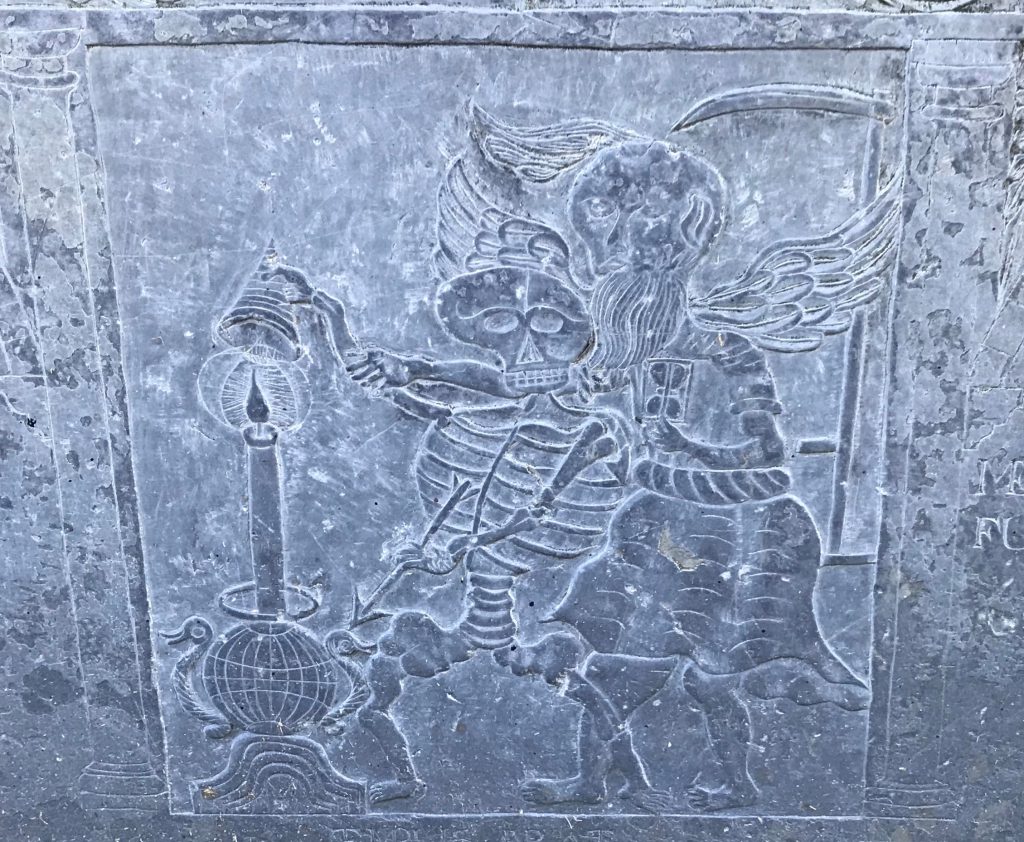
Arrow or Dart
The arrow is a symbol of mortality–a “dart of death.” The skeleton at left is holding a dart or arrow while snuffing out the “candle of life” and partnering with Father Time.
Arrows may also represent a military profession or hunter.

Balance or Scales
Balance or Fairness. Scales may represent a merchant’s trade or the weighing of the soul on Judgement Day.
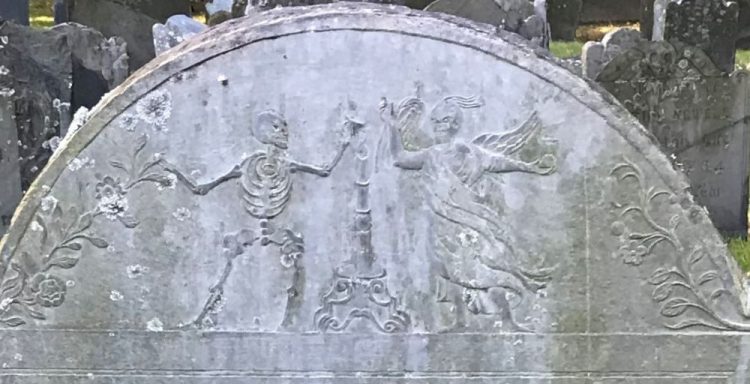
Candle
A skeleton snuffing a candle represents life ending on earth. A broken candle symbolizes a life cut short. For Christians the candle is the spirit of the soul.
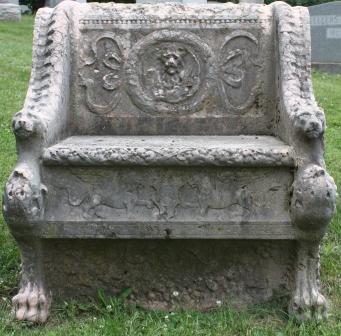
Chair
An empty chair is a symbol of mortality. A small, empty chair may indicate the death of a child.
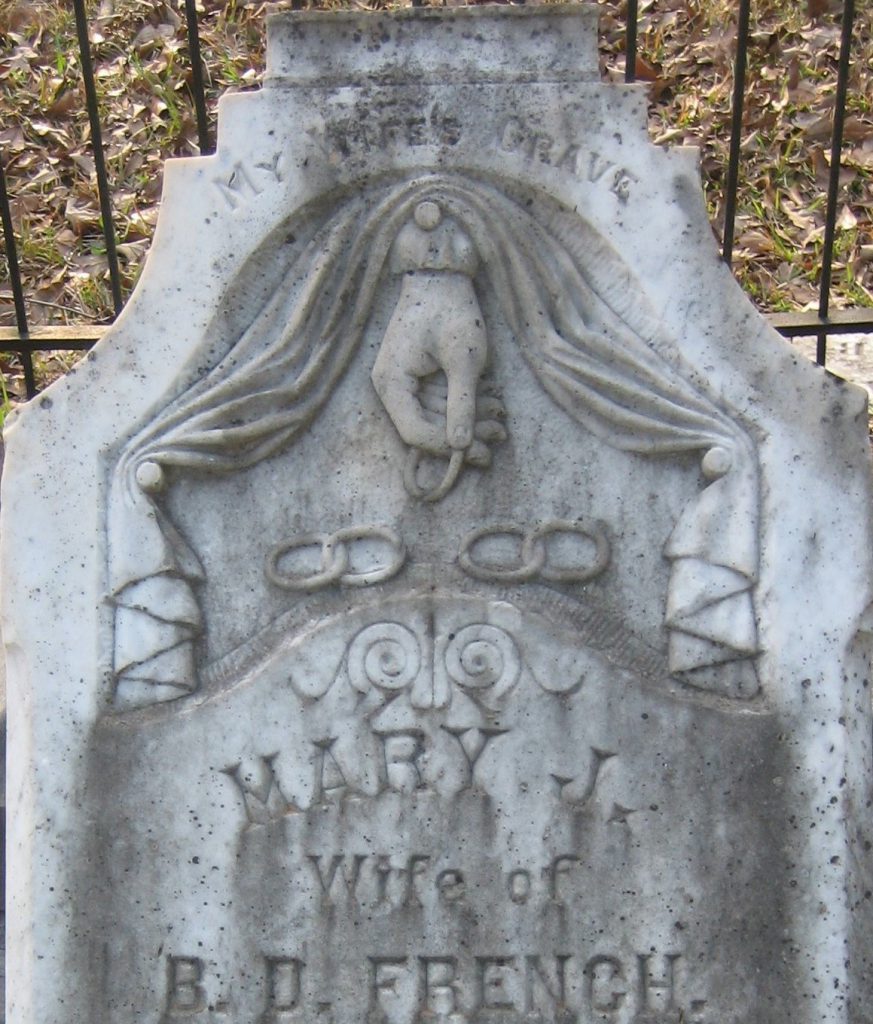
Chain
A broken chain symbolizes the soul is freed — removed by death. Three chain links is a symbol of the Order of the Odd Fellows. Links can also be a symbol of living or deceased family members.
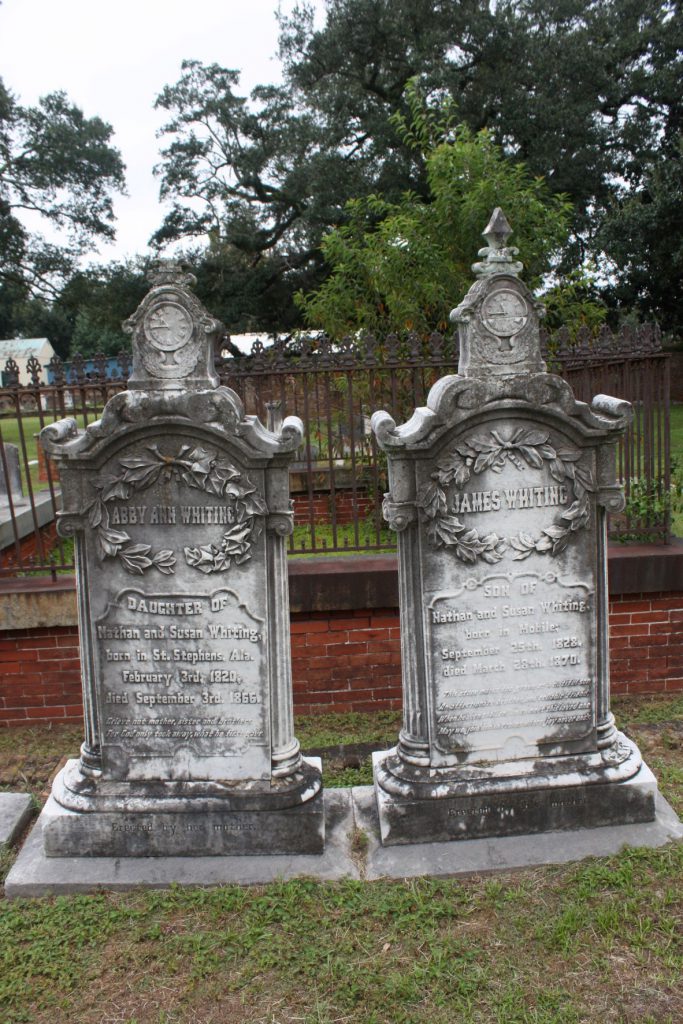
Clock
A clock is a symbol of mortality. A clock with the hands pointing at 11:00 is associated with the Benevolent and Protective Order of the Elk–see acronyms – BPOE for more information on Elks. Clocks are sometimes stopped at the time of death. Some clocks represent “time flies” when shown with wings

Coffin
A coffin engraved on a tombstone is a symbol of mortality–the inevitable ending.

Column
A column symbolizes a noble life. A broken column represents life cut off and may represent the loss of the family head.
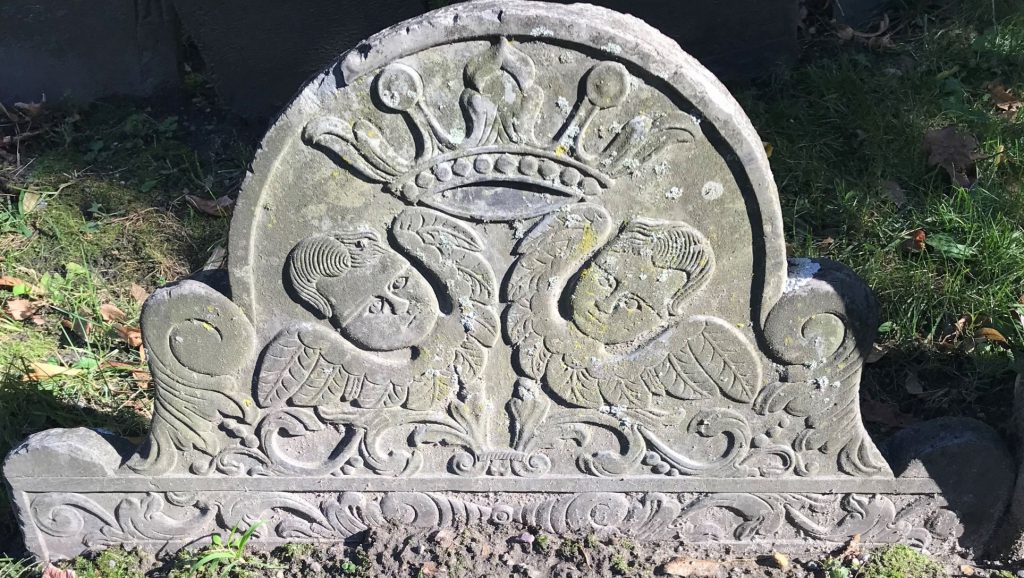
Crown
The crown represents achievement of the soul and glory of life after death. Victory over death. Righteousness.
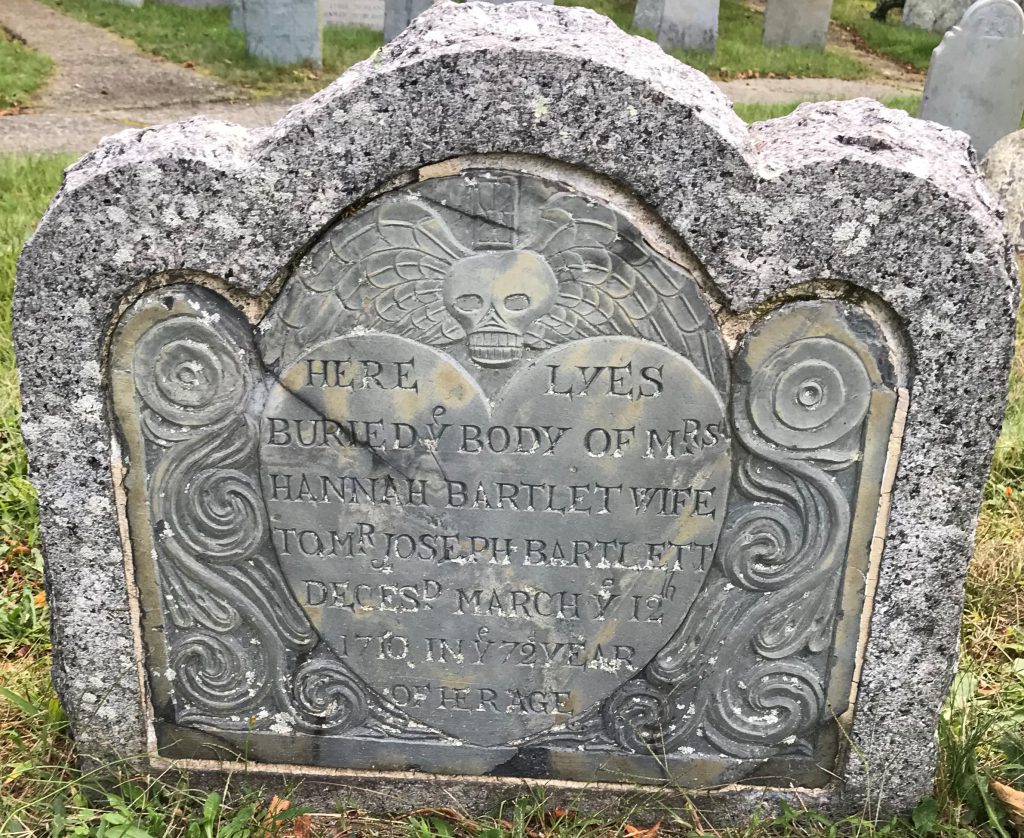
Death’s Head
The Death’s Head is a symbol of mortality that is typically depicted with a winged skull with bones. The winged skull conveys life as a fleeting thing. Over time, the image softened to a cherub’s head with wings.
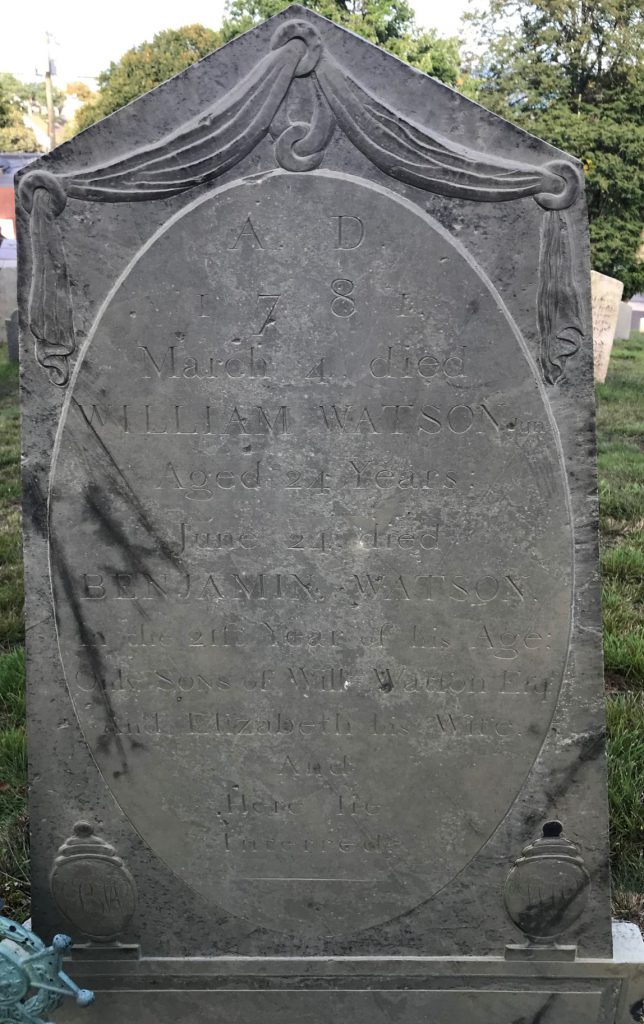
Drapery
Drapery symbolizes sorrow and mourning.
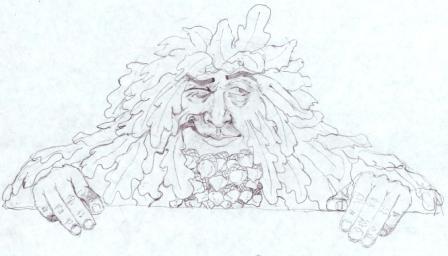
Green Man
The Green Man is a symbol of death and rebirth –representing the cycle of new growth or regeneration.
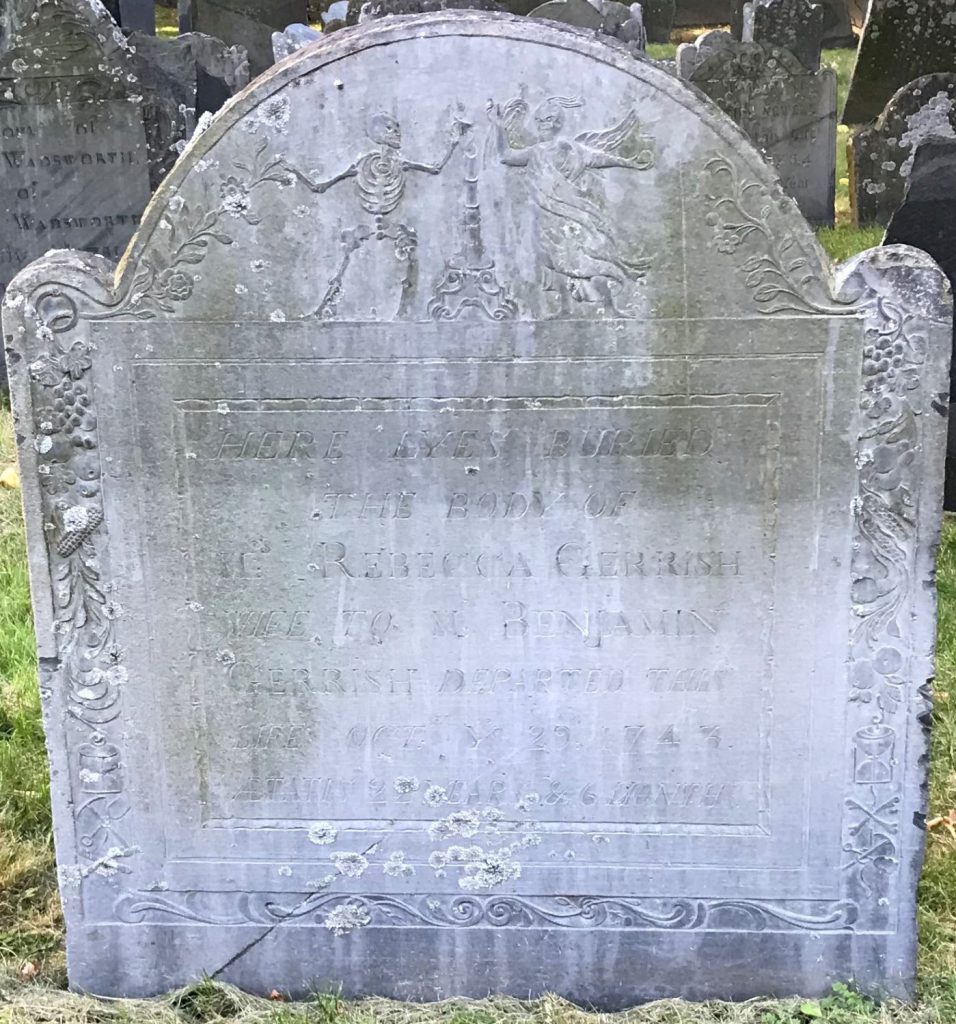
Grim Reaper/Father Time
The Grim Reaper is a common symbol of death and is generally shown with a scythe. Father time is generally equipped with a scythe and an hour glass representing mortality and the passage of time.

Hour Glass
A reminder of the brevity of life and the passage of time. A flaming hourglass represents eternity. The Winged Hourglass represents mortality, fleeting earthly existence, “time flies.”
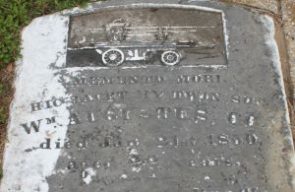
Memento Mori
Memento Mori in Latin means “Remember Death.” A reminder that life is short and that all will die.

Scythe or Sickle
The scythe is a weapon of death indicative of mortality. The Grim Reaper and Father Time are generally depicted with a scythe.
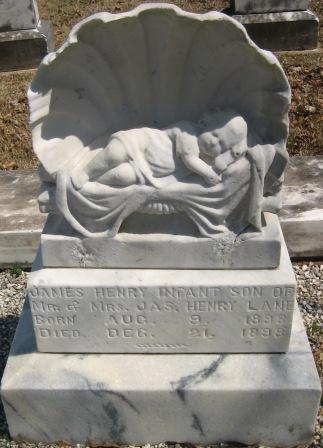
Shell
The shell represents man’s earthly pilgrimage; birth and resurrection. Shell babies were common in the early 1900’s when they could be ordered from the Sears Catalog.
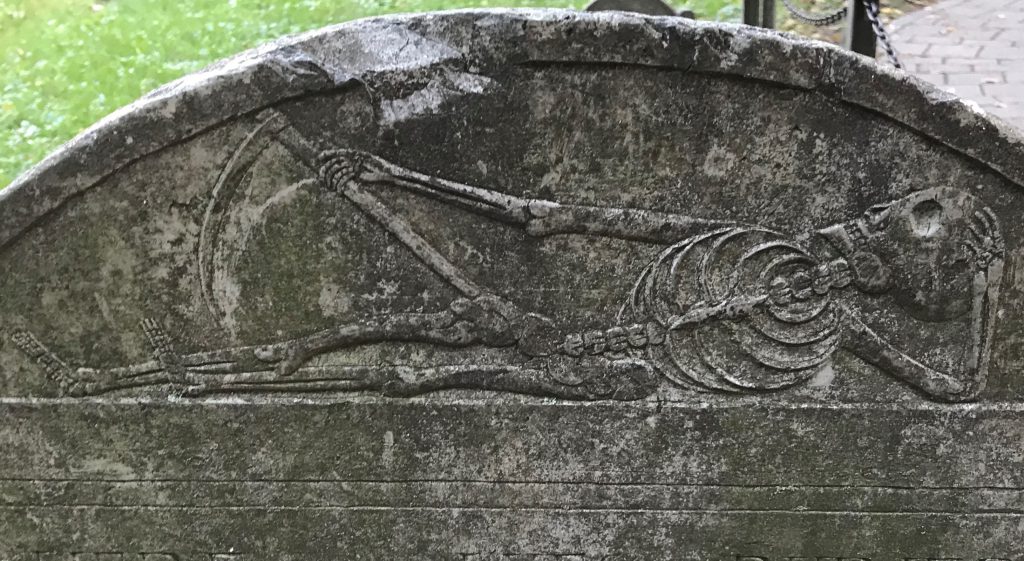
Skeleton
The skeleton is a clear reminder of mortality, symbolizing death and life’s brevity on earth.

Skull
The skull represents death. The skull and crossbones were common “Memento Mori” symbols in the 16th and 17th centuries.
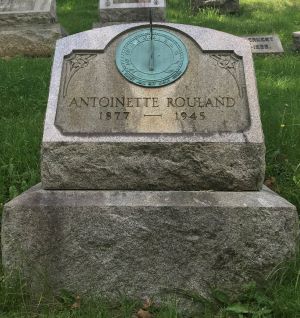
Sun Dial
The sun dial represents the passage of time.

Torch
A lit torch signifies life or eternal life. An extinguished torch symbolizes death. An inverted torch with a flame symbolizes the eternal soul.

Urn
The Urn represents immortality, penitence, death of the body and its return to dust in the final resting-place. The draped Urn represents sorrow or mourning.

Wheel
A broken wheel symbolizes a finished journey. The wheel symbolizes eternity, continuation and progress. A wheel may also represent Buddhism or industry such as automotive. The depiction of Ecclesiastes 12.6-7 includes a wheel with a broken cord, a broken pitcher, a shattered bowl and water representing the well or spring.